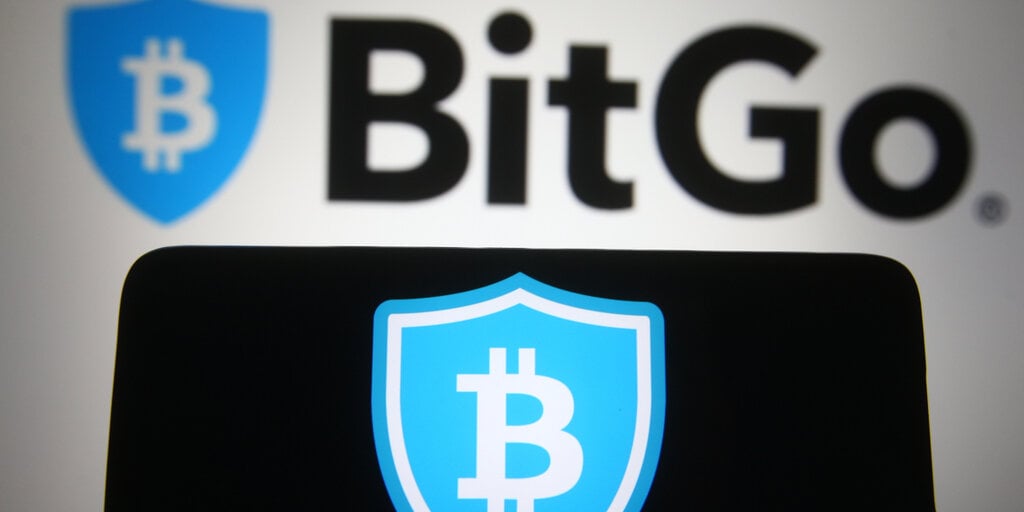The stablecoin wars are heating up, and American digital asset custodian BitGo is the latest to join the fray with Wednesday’s launch of its new U.S. dollar-pegged coin.
Dubbed USDS, the asset will prioritize “fairness, transparency, and market neutrality,” BitGo said in a statement. USDS will be available in January 2025, the firm said, with rewards promised to users.
The launch comes as the Palo Alto, California-based company appears to be taking the fight to Coinbase, America’s biggest crypto exchange, over hot new digital asset products.
💸 Introducing $USDS
The first open-participation stablecoin to redefine financial freedom.
Built on a foundation of transparency, USDS empowers the community by democratizing the stablecoin experience and putting the power back in your hands.
🏦 1:1 USD Backing: USDS is fully… pic.twitter.com/pfzXWGZ1ze
— BitGo (@BitGo) September 18, 2024
Just last week, the San Francisco-based Coinbase launched a new “wrapped” Bitcoin token called cbBTC–an asset pegged 1:1 to Bitcoin that can be used on Ethereum and its Coinbase-incubated Base layer-2 network.
That move came after BitGo, the custodian of WBTC—the original and most-used wrapped Bitcoin token—announced it was teaming with Hong Kong-based BiT Global to “diversify custody operations and cold storage across multiple jurisdictions” for the cryptocurrency.
The move stirred controversy in the space because of crypto entrepreneur Justin Sun’s connections with BiT Global. Sun is the controversial founder of the Tron network.
Now, BitGo is hoping to enter the competitive world of stablecoins. Coinbase helped create top stablecoin USD Coin (USDC)—a popular, dollar-pegged token that allows investors to earn yield via an account at the top crypto exchange.
“The stablecoin market has long been dominated by players who prioritize profits over ecosystem growth,” BitGo’s statement said. The firm added that its new product is backed by a combination of short-duration T-bills, overnight repurchase agreements (or repos), and cash reserves—and will be independently audited by “top-tier accounting firms.”
BitGo did not immediately confirm to Decrypt that its reserves would be audited by one of the “Big Four” accounting firms (aka Deloitte, EY, KPMG, or PwC.)
In the crypto world, stablecoins are a type of digital token pegged to a stable asset—usually U.S. dollars. They allow traders to move money quickly and easily without having to use traditional banks, plus they typically don’t suffer from the kind of volatility seen with most cryptocurrencies.
And they are the backbone of the digital asset economy: Tether (USDT) and USDC are the third and sixth biggest cryptocurrencies by market cap, respectively. The 24-hour volume of USDT across exchanges is $38.2 billion, according to CoinGecko.
Meanwhile Bitcoin, the biggest, oldest, and best-known coin today, has a smaller 24-hour trading volume mark of $33.9 billion.
Though popular, stablecoins are a controversial asset in the space. Regulators are trying to control the opaque industry, and banks have warned that such assets could pose risks to financial stability.
Furthermore, such projects can be experimental—and therefore risky: In 2022, crypto network Terra blew-up when its algorithmic stablecoin, UST, lost its peg. The collapse of such a big project in the industry caused nearly every digital coin and token in the space to plunge in price.
Tether is particularly controversial because its reserves haven’t been independently audited by a top accounting firm, though the company publishes attestation reports and other transparency data. The company has said that it’s trying to build a relationship with one of the “Big Four” firms to get an audit done.
Tether agreed in 2021 to no longer do business in New York after a two-year New York Attorney General investigation found it had “made false statements about the backing” of its stablecoin.
Edited by Andrew Hayward

